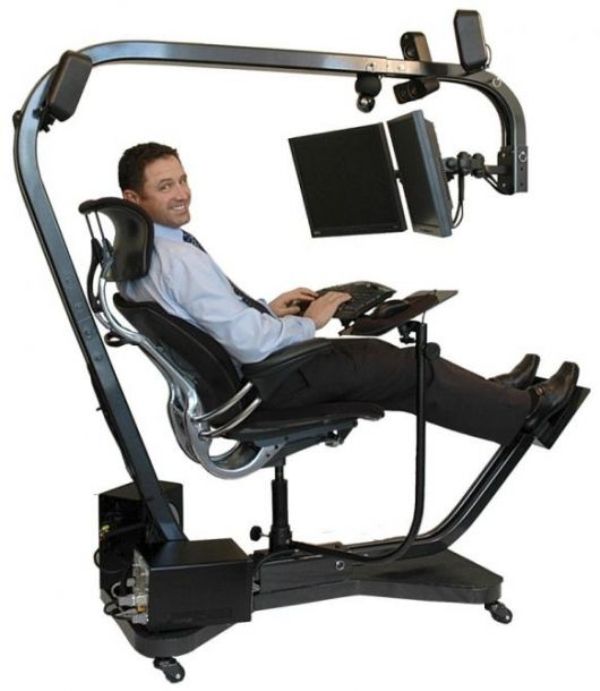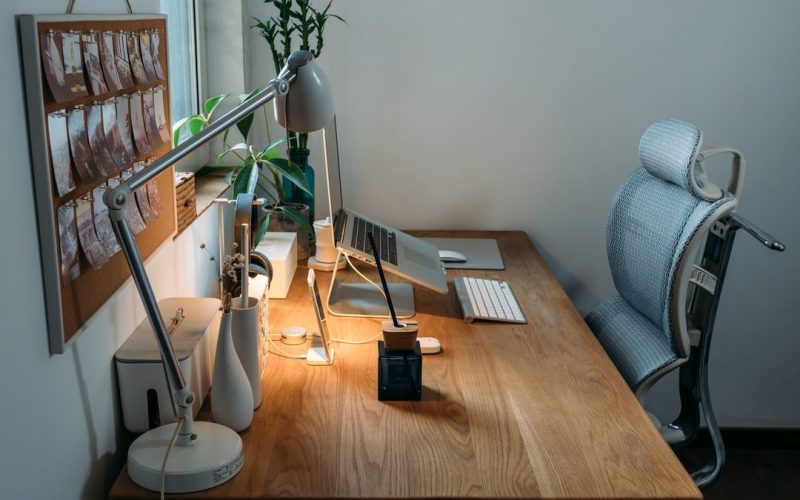Do you have pain in your neck and back?
If you feel sore and stiff after a normal day of work, your workstation may be to blame. With 90% of all U.S. office workers being glued to a computer screen all day, more companies are adopting an ergonomic approach than ever before.
An ergonomic workstation will ensure that you are properly aligned and protect the areas of your body that are most susceptible to injury and strain while sitting at the desk.
You’re wondering what you need to create an ergonomic workstation? Please check out this guide below.
Please figure out your normal posture
The first step in finding out how to adjust your workspace is to see how you naturally want to place your body. We’re not talking about a crouched position over your desk, an eye squinting position that you may find yourself in the middle of your workday.
Sit down as it is now at your desk and find your normal posture. This means sitting up straight and then relaxing slightly so that you don’t have an uncomfortable or unreasonable position to hold while you’re working.
Place your legs flat on the floor in front of you. Let your arms rest easily in your lap and let your shoulders relax. Be careful that you do not overly straighten your spine. You’re working to find your natural position and stiffen up, even if it means a straight back, it can be just as harmful as slouching.
Notice how you’re sitting when you find this natural alignment. You should feel like your vertebrae are gently stacked on top of each other. This is the position that we will work to achieve by adjusting the items below to support it.
Keyboard & Mouse

You’ve probably been doing this for years; you’ve reached out your arms in front of you to type your keyboard away, and you’ve reached out to the side of your arm to move the mouse.
In this position, we place a significant strain on our shoulders, trapezoids and even rhomboid muscles. When we reach forward with our hands, our spine tends to go with it, hunching over and forgoing any sense of good posture that we might have started with.
Keeping your spine straight, but still reaching out to your arms, is just as strenuous on your muscles, so it’s important to consider both positions. As you type or use the mouse, you want your elbows close to your sides and at an angle of ninety degrees or deeper. When your elbows are low and close to you, you stop acting on the muscles in your arms, shoulders, upper back, and neck, all of which are pulled in different directions when you reach out to your arms.
When your arms have been lowered and angled, place your keyboard and mouse about two inches above your lap. The key not to overuse our upper body is to keep it relaxed so that placing your keyboard above your thighs allows you to retain the same element of natural posture you’ve discovered earlier.
If your desk isn’t low enough, you’ll probably need to get a pull-out keyboard tray. If your keyboard doesn’t have a built-in mouse, you want to make sure the mouse isn’t farther than the width of your shoulder. You want to be able to reach and use the mouse without changing your position.
Consider investing in your flat mouse. This will ensure that you do not raise and lower your arm to different levels when you move back and forth between it and the keyboard. And buying a keyboard and mouse tray is also a good option.
Screens
When you start adjusting your screens or screens, the first step is to figure out how far away they should be from your face. The easy test is to sit comfortably in your chair, find your natural posture, and then reach out to your arm. Your screen should be about the length of your arms. Anything further, and you’ll inadvertently jump your neck out to get closer to the screen and see it more clearly.
If you use a second screen, use this tip to figure out the distance and place the second screen to the right or left of the centered one, but try to leave as little space as possible between the two. This is going to stop you from cranking your neck to look at another screen.
Perhaps the most important thing is the height of your screen. We want to avoid looking down as it strains the back of our neck, and we don’t want to tilt up to look at the screen above us.
Find your natural position and open your eyes to look straight ahead of you. Wherever your eyeline falls naturally is where the search engine tabs should be located. If you’re using two, adjust both screens to be on this level. If you want to give the position a try before investing, you can buy a stand or even stack your screen on books. You can also have your screens mounted to pole mounts to add more benefit to your workspace and comfort while at work or gaming.
Chair

Finding a perfect chair can be the most important part of a successful ergonomic workshop. There are a few things you’ll need to consider, and it’s important to test them before you make a purchase. You want the back of the chair to suit and support your natural position. Most ergonomic chairs will have a slight lower area, which is ideal because you don’t want to tuck your tailbone under when you’re sitting.
Finally, you want to make sure the height of the chair is right. This should be adjustable to whatever chair you buy. Be sure that your legs can rest flat on the floor without straining your lower back or causing you to lean or scoop forward in the chair to touch the ground.






